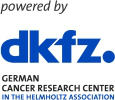Description
Background:
Chimeric antigen receptor T-cell (CAR-T) therapy has shown efficacy in multiple cancers but remains limited in glioblastoma due to tumor heterogeneity, immune evasion, and T-cell dysfunction. We analyzed spatial expression of CAR-T targets across tumor subtypes, between the tumor core and infiltration zone, and immune-reactive regions to identify therapeutic gaps.
Material and Methods:
We analyzed spatial transcriptomic data from 62 glioblastoma specimens using SPATA2 software, supported by advanced tools including scVI (data integration), Cell2Location (single-cell deconvolution), graph neural networks, gene set enrichment analysis (GSEA), and spatial annotation screening (SAS). CAR-T targets were selected based on existing clinical and preclinical studies.
Results: Spatial mapping revealed a gradient of NPC-like cells, enriched in the infiltration zone and resection margins—regions critical for residual disease. CAR-T targets such as ERBB2 and PTPRZ1 were highly expressed in AC-like and OPC-like niches but largely absent in NPC-rich areas, indicating a blind spot for current CAR-T therapies. Single-cell deconvolution linked NPC-like dominance to increased T-cell infiltration, while GSEA and clonal analysis suggested impaired T-cell function in these regions, indicating potential immune evasion.
Conclusion:
Our study exposes a fundamental limitation of current CAR-T designs: their inefficacy against NPC-like cells that dominate the infiltration zone and therefore the post-surgical glioblastoma ecosystem. By pinpointing spatial and phenotypic resistance hubs, we provide a preclinical rationale for adapting CAR-T strategies to address this gap and improve therapeutic coverage. Protein-level validation of key findings is currently ongoing to further substantiate the results.
| Preferred type of presentation | Poster Presentation only |
|---|

